Increasing the Effectiveness of Waterway Plastic Waste Collection to Protect the Environment
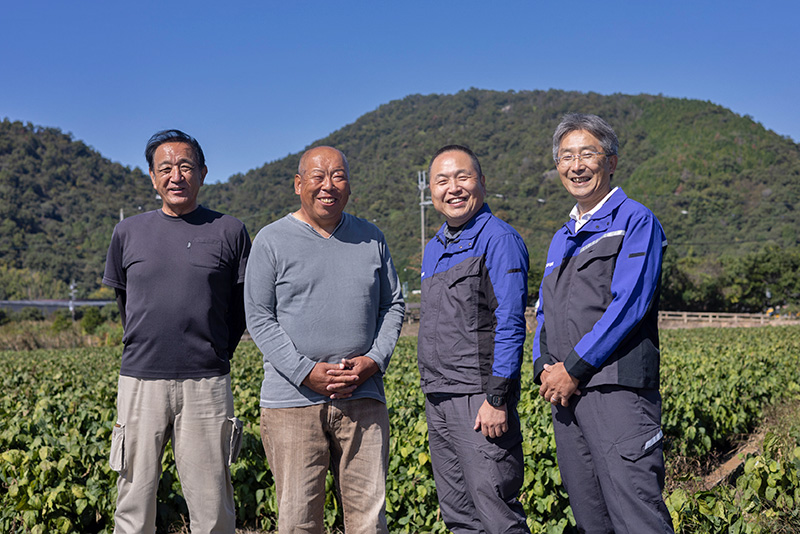
Daifuku announced its collaboration with the Kitanoshosawa Preservation Association (KPA) in August 2024 to survey and collect plastic waste that makes its way into the Kitanoshosawa waterway. Kitanoshosawa is located in Shiga Prefecture, the same as Daifuku’s flagship plant, Shiga Works. Once a flourishing water town with pristine wetlands where people could enjoy swimming, the region’s natural beauty has suffered from various causes over time. We spoke with Junichiro Sumida and Hideki Fujimoto, vice chairmen of the KPA, and Osamu Matsuda and Yoshinori Shibata from Daifuku’s Business Innovation Division about their thoughts on environmental preservation and how they plan to address the region’s issues.
Preserving the scenic Suigo waterways for future generations
Omihachiman City, located about a 40-minute drive from Daifuku’s Shiga Works, lies in Central Shiga Prefecture along the eastern shore of Lake Biwa. The area flourished as a castle town during the Sengoku and Azuchi-Momoyama periods under the Rakuichi Rakuza (“free markets and open guilds”) economic policy and gave rise to the famous Omi merchants. During this time, waterways from Lake Biwa to the Hachimanbori Canal were constructed, leading to the area becoming known as Suigo no Machi, or “Waterside Town.”
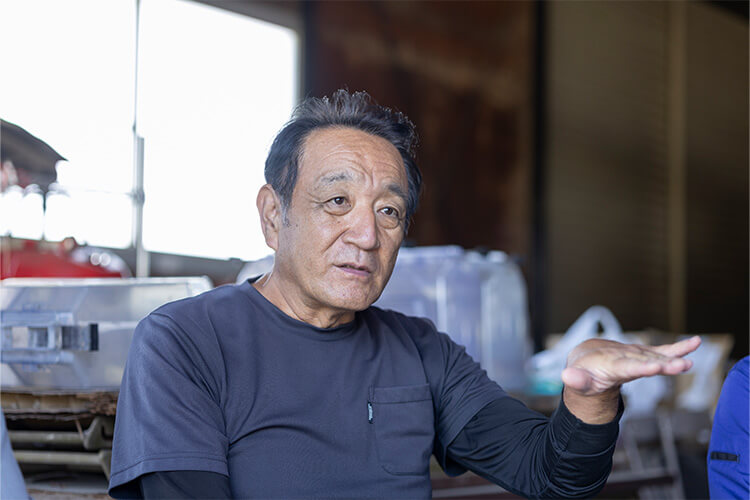
Kitanoshosawa is one of those waterfront areas, and the Kitanoshosawa Preservation Association (KPA) is involved in various initiatives to preserve the area’s environment. Junichiro Sumida, vice chairman of the KPA, provided more information on the area’s history. “In 1905, construction was done on the river flowing from Lake Biwa to control its flow and prevent flooding. The changes to the river dropped Lake Biwa’s water level by about 90 cm, exposing land in shallower areas and forming small ‘inner lakes.’ During World War II, however, over 80% of these lakes were drained to address food shortages. The western lake leading to Kitanoshosawa was spared, so the area’s waterside landscape remained as it is today.”
Later on, during Japan’s period of rapid economic growth, local lifestyles changed, and cars replaced boats as the main means of transportation in the area. Household wastewater and garbage also began to make its way into the waterways. In the 1970s, plans to fill in the nearby Hachimanbori Canal emerged due to environmental pollution concerns, but preservation efforts in opposition to the project successfully protected the landscape.
“Conservation efforts eventually extended to Kitanoshosawa following the efforts at Hachimanbori Canal, leading to the establishment of the Kitanoshosawa Preservation Association in 2000,” says Sumida. “The primary goal of the KPA is to protect water quality in the area. The water here was once so clean you could swim in it, and the late author Ryotaro Shiba wrote about how Suigo’s water could be drunk straight from a cup. We hope to restore that historic and natural landscape.”
-
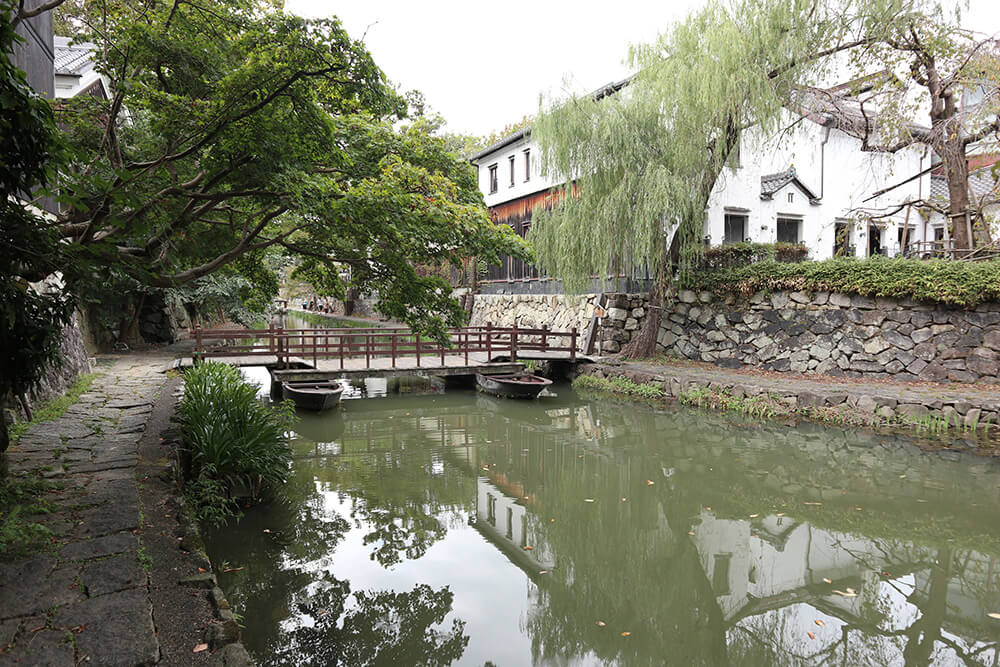
One of Hachimanbori’s historic waterways, built during the Toyotomi administration
-
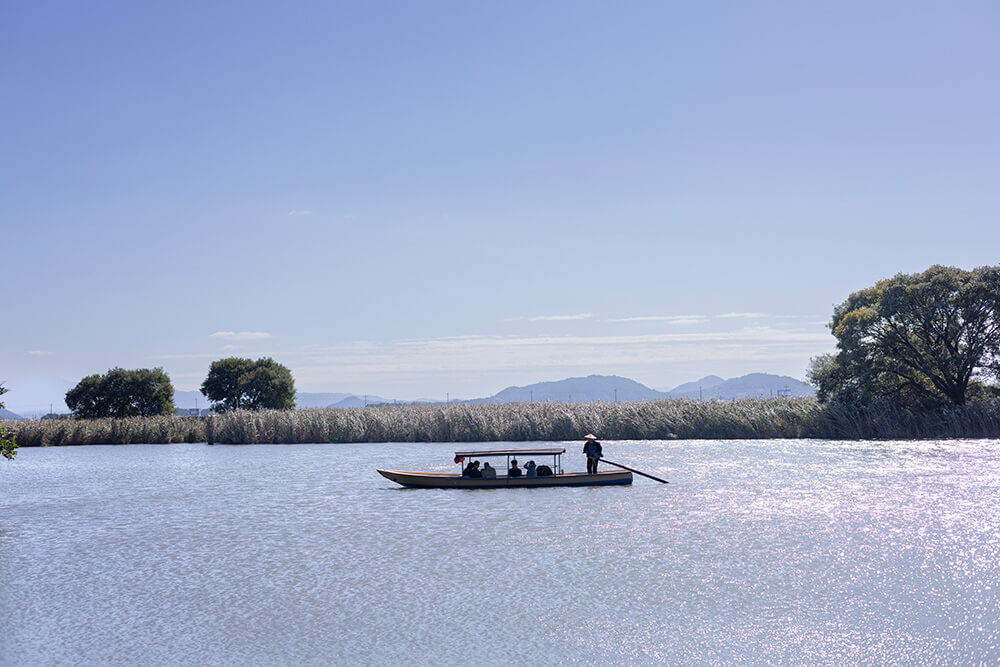
A hand-rowed boat touring Suigo’s Kitanoshosawa waterway
A heavy undertaking: collecting and sorting river waste
Since its inception, the KPA has focused on waterfront cleanup activities. In addition to holding regular general meetings where participants can freely exchange conservation ideas, the KPA also hosts a variety of other activities including educational seminars with experts on waste issues, moss phlox planting events, and nature workshops for children.
“Every Sunday, about 10 of us gather to clean up the waterfront areas,” says Sumida. “Dead grass, leaves, and various other debris make their way into the waterways extending into Kitanoshosawa, and we lift and collect as much as we can from boats. Organic matter like grass and wood is heavy and requires a lot of work to remove, but we know that it’s only natural for it to find its way into the waterways so this work is unavoidable.”
However, human-made waste poses a greater challenge, as Hideki Fujimoto, vice chairman of the Association, explains.
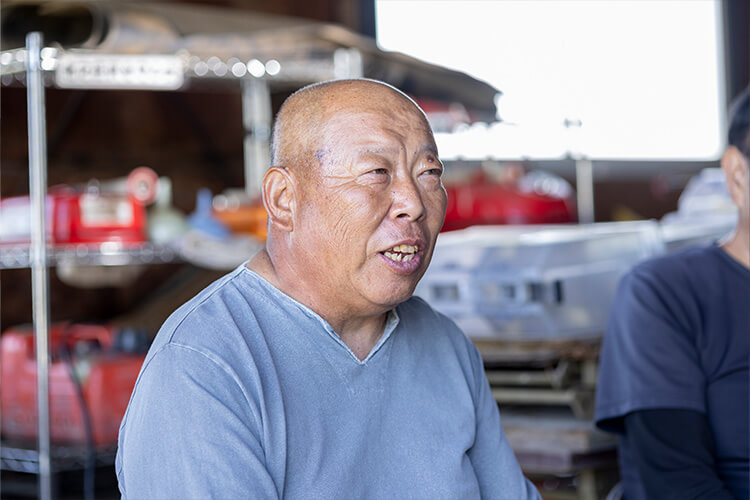
“Plastic bottles make up most of the man-made trash, followed by cans, glass bottles, plastic bags, and beverage cartons. After sorting out the recyclable cans and bottles, we take all the trash to designated collection points. In the past, we’ve even found larger items like sofas and other furniture, motorcycle parts, and illegally dumped paint cans. Because this larger waste cannot be lifted manually, and cleaning spilled paint requires specialized knowledge, we end up having to ask for help from local government offices.”
Protecting the local environment requires more than just grassroots volunteer efforts like that of the KPA; it demands cooperation from all stakeholders, including local governments and community members.
Daifuku’s long-term vision, Driving Innovative Impact 2030, notes that, “This vision encompasses our strong desire to achieve even greater economic and social value by strengthening our initiatives with new future-oriented ideas and trailblazing groundbreaking change for our stakeholders.” The company has been looking into ways it can contribute to solving social issues, including environmental challenges. Osamu Matsuda, General Manager of the Business Innovation Division, recalls the beginning of Daifuku’s involvement in Suigo: “During a departmental discussion on environmental issues, one of our employees brought up the Kitanoshosawa area, so we went to survey the site.
We saw plastic bottles and other waste caught in containment booms along the waterways, and we thought about how we could help the community. We knew we couldn’t ignore this issue.”
Through continued engagement with the KPA, Chief Engineer Yoshinori Shibata recognized another critical challenge: the physical burden on volunteers, most of whom are part-time farmers who know firsthand the importance of environmental conservation but are on average over 70 and struggle to participate regularly.
“I had heard that the aging of members was a major issue the KPA was facing, and after participating in cleanup activities, I saw for myself just how taxing the work is, and I felt like we needed to somehow make waste collection easier.”

Protecting nature as a manufacturer
Inspired by its partnership with the KPA, Daifuku decided to focus its efforts on the issue of plastic waste in rivers. Such plastic waste is a common problem throughout Japan and is well-known as a danger to marine life.
“At first, I thought plastic waste was mostly a marine issue.” explains Shibata. “But when we really looked at it, we found that everyday waste flows from rivers into the ocean, highlighting the importance of tackling river waste first. We also realized that this project would strongly align with the Daifuku Group’s ESG (environment, society and governance) initiatives.”
Plastic waste can be broadly categorized into microplastics, which are finely broken down over time, and macroplastics, which are closer to their product state, such as plastic bottles and bags. Daifuku decided to focus its energy on removing macroplastics. Referencing the Japan Ministry of the Environment’s proposed methodology for river waste management, Daifuku surveys and collects plastic waste with a diameter of at least 25 mm, preventing it from flowing to the ocean. This effort marks the first time a private company in Japan has proactively undertaken such work and represents a new milestone for Daifuku as a comprehensive material-handling manufacturer.
“The individuals in the KPA are working tirelessly to protect their hometown for future generations,” notes Matsuda. “In light of that, we at Daifuku thought about what we could do to ensure a brighter future, and we concluded that we should not be putting the burden of all of this work on volunteers. We will continue to look for new ways to reduce the burden of river waste collection as we explore effective measures to build a more sustainable business.”
Collected waste can become a valuable resource, and manufacturing of any kind relies on resources that originate from the environment. Daifuku firmly recognizes that protecting the environment and promoting resource circulation are cornerstones of sustainable manufacturing.
As its first step toward that goal, Daifuku is dedicated to working alongside the KPA to address the issue of plastic waste that finds its way into rivers.
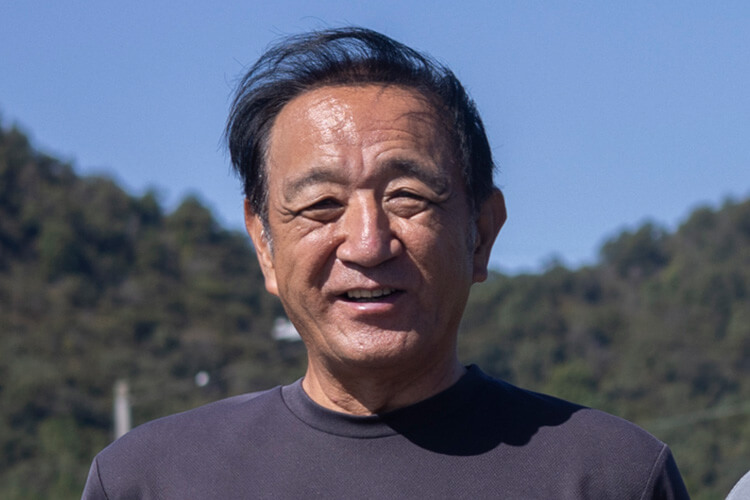
Junichiro Sumida
Kitanoshosawa Preservation Association
Vice Chairman
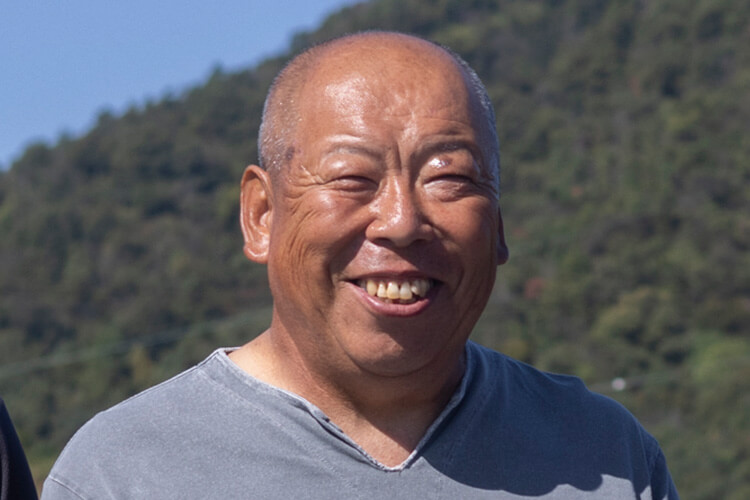
Hideki Fujimoto
Kitanoshosawa Preservation Association
Vice Chairman
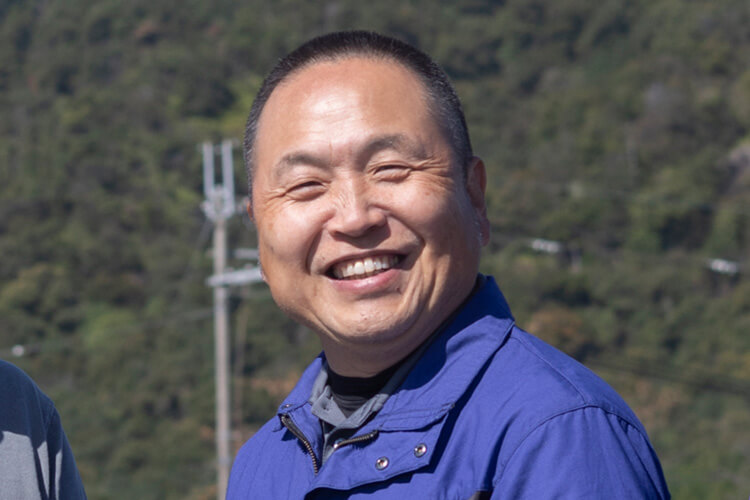
Osamu Matsuda
General Manager, Business Innovation Division
Daifuku Co., Ltd.
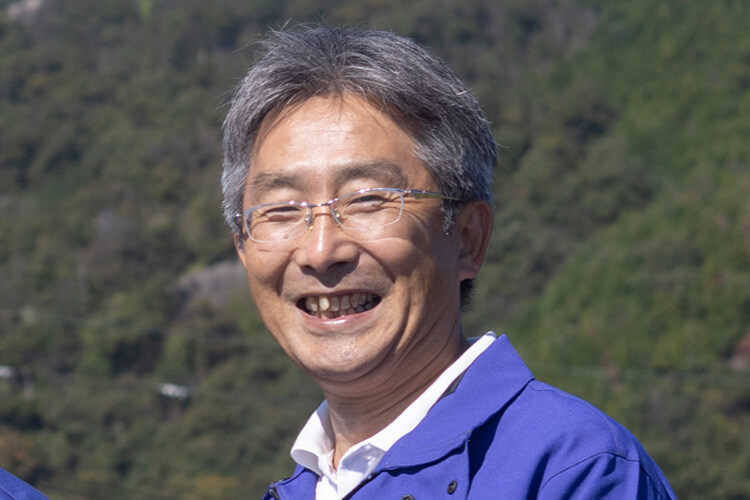
Yoshinori Shibata
Chief Engineer, Business Innovation Division
Daifuku Co., Ltd.
